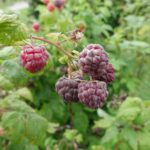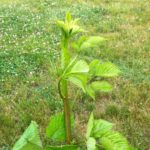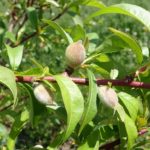Populations of spotted wing drosophila continue to increase. As best I can tell, numbers are not at the devastating levels that they were a couple of years ago, but there are still plenty around to cause very serious injury to small fruit. Raspberry, blackberry, and blueberry growers should be on a regular spray program at[Read More…]
Bramble Fruit
Mites continue to be a concern for both fruit and vegetable growers. We are just now at the historical peak population time for European red mites. Fruit growers should be scouting their more susceptible blocks regularly for the next few weeks. The thresholds for treatment increase as we get later in the season. See https://extension.entm.purdue.edu/publications/E-258/E-258.html[Read More…]
Approximately 40 growers attended the Society’s summer field day a couple of weeks ago. Thanks go to David, Valerie and Theresa Doud for being wonderful hosts. We saw apples, peaches and strawberries, and also some of the new MAIA apple selections being developed. After lunch we visited Cordes Berry Farm which consists of over 9[Read More…]
We caught our first spotted wing drosophila adults in traps in Elkhart County over the weekend. We can assume that they will be flying and laying their eggs in developing fruit of grape, raspberry, blackberry, and blueberry from this point until the end of the season. In addition to checking traps, growers should be inspecting[Read More…]
Blueberry Growers of Indiana Spring Meeting and potluck June 9, 2016, 4:00 pm Sider’s Blueberry Farm. 6254 W. 200 North, Rochester, IN. More information will follow. Indiana Winery and Vineyard Association Summer meeting July 19-20, 2016 Brown County Inn. Nashville, IN. More information will follow. Indiana Hort Society Summer Field Day June 22, 2016 David[Read More…]
Tipping of primocanes (new vegetative canes from the ground) is an important management practice for summer bearing blackberries and black raspberries. Tipping the new primocanes causes lateral branching and most of the fruit production next year will be from buds on those lateral branches rather than buds off the main cane. Tipping also helps increase[Read More…]



